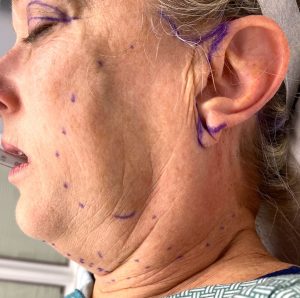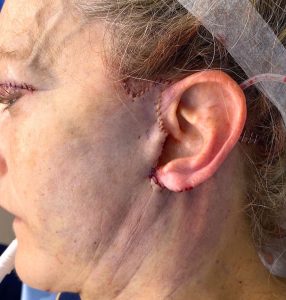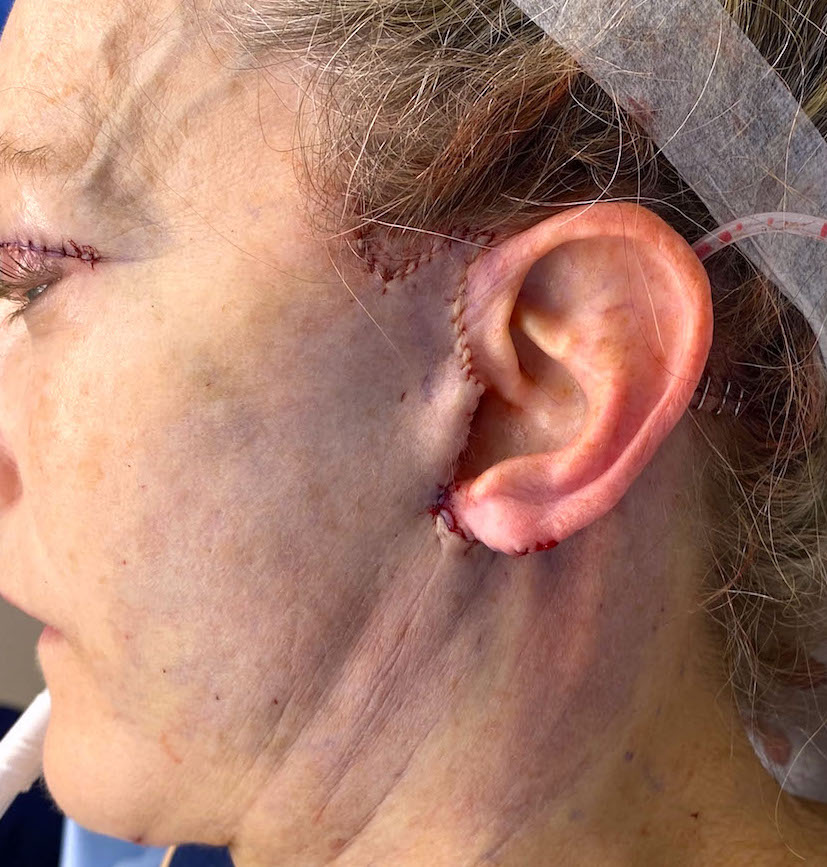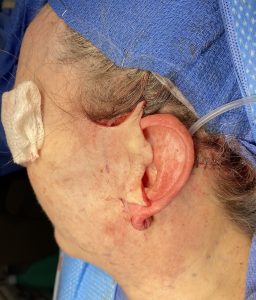The facelift is a well known facial rejuvenation procedure that has had many technical and some conceptual variations over the years. The biggest innovation and recent is for the deep plane facelift. One could debate what constitutes a deep plane facelift at the SMAS and sub-SMAS layers but the concept is anatomically sound…release and lift the deeper tissues of the face which takes the pressure off of the skin excision and closure.
While a lot of attention is paid to the deeper tissues of the face the most visible part of a facelift remains the incision closure around the ear as well as its effects on the ear and temporal and occipital hairlines. This is certainly one criteria by which a patient judges their facelift result. One of the benefits of a deep place facelift is that it helps prevent adverse scarring and hairline changes by avoiding tension on the closure lines. But good technique is still needed at this superficial level of a facelift to ensure a good result.



Dr. Barry Eppley
World-Renowned Plastic Surgeon




